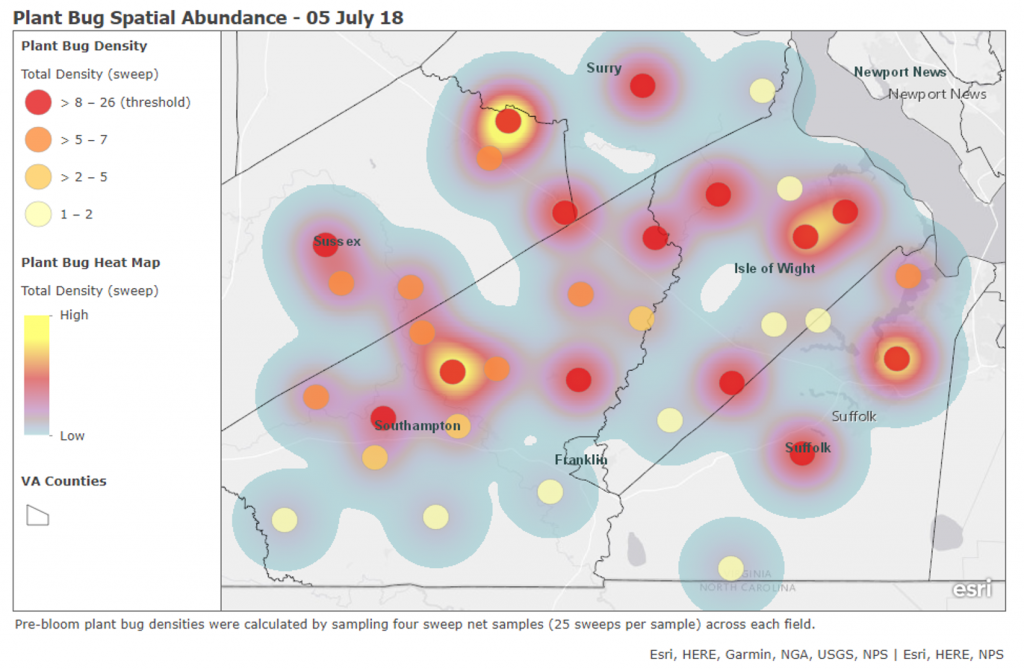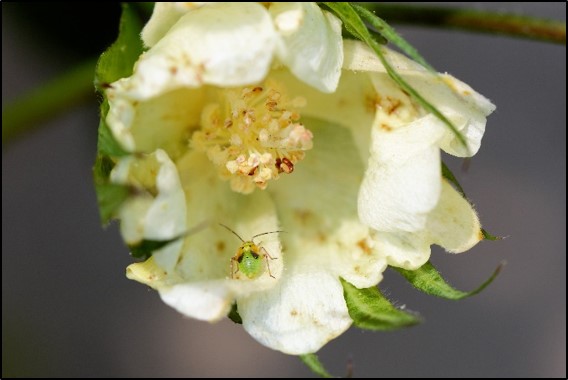Tarnished plant bugs continue to be a problem in some Virginia cotton fields. This week, scouts found 14 of 32 fields over the pre-bloom threshold (8 per 100 sweeps) and increasing numbers of nymphs. Drop cloth sampling is recommended for blooming cotton and counting squares is no longer a good indication of feeding. Threshold is 2-3 bugs per sample. Check out this short video (https://www.youtube.com/watch?v=XRnZhLczZJ0) if you have questions on how to use this method or are unsure of what nymphs look like. Dirty blooms indicate feeding, but active populations should be confirmed before a spray is made.
As cotton begins to bloom, neonicotinoids (e.g., Admire Pro, Centric, Belay) lose efficacy and I recommend rotating to a pyrethroid, a pyrethroid/acephate mix, or Bidrin. These products will also control stink bugs if present. Transform is not labeled in Virginia, but our representative in Richmond is working hard to get us a Section 18 and I hope to have one in place by next year at the latest. All of these products will kill beneficial predators in your field. This is a concern as we near bollworm egg lay in cotton.
I encourage you to treat for insect pests only when thresholds are reached. Plant bug control will likely be needed through mid-August when populations peak, even in fields that have been previously sprayed. Spider mites, aphids, and bollworm (in two-gene cotton) risk increases with each broad-spectrum insecticide use, as does the risk for sprayer fatigue.
Special thanks to graduate student Seth Dorman and crew for their continued scouting efforts.


